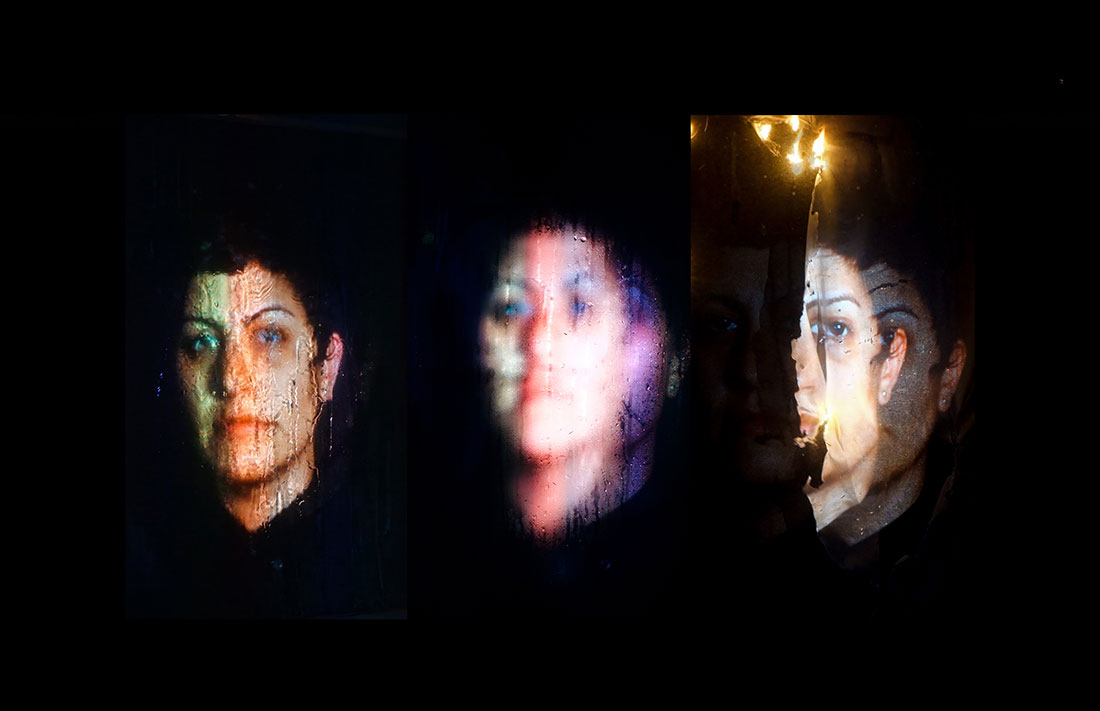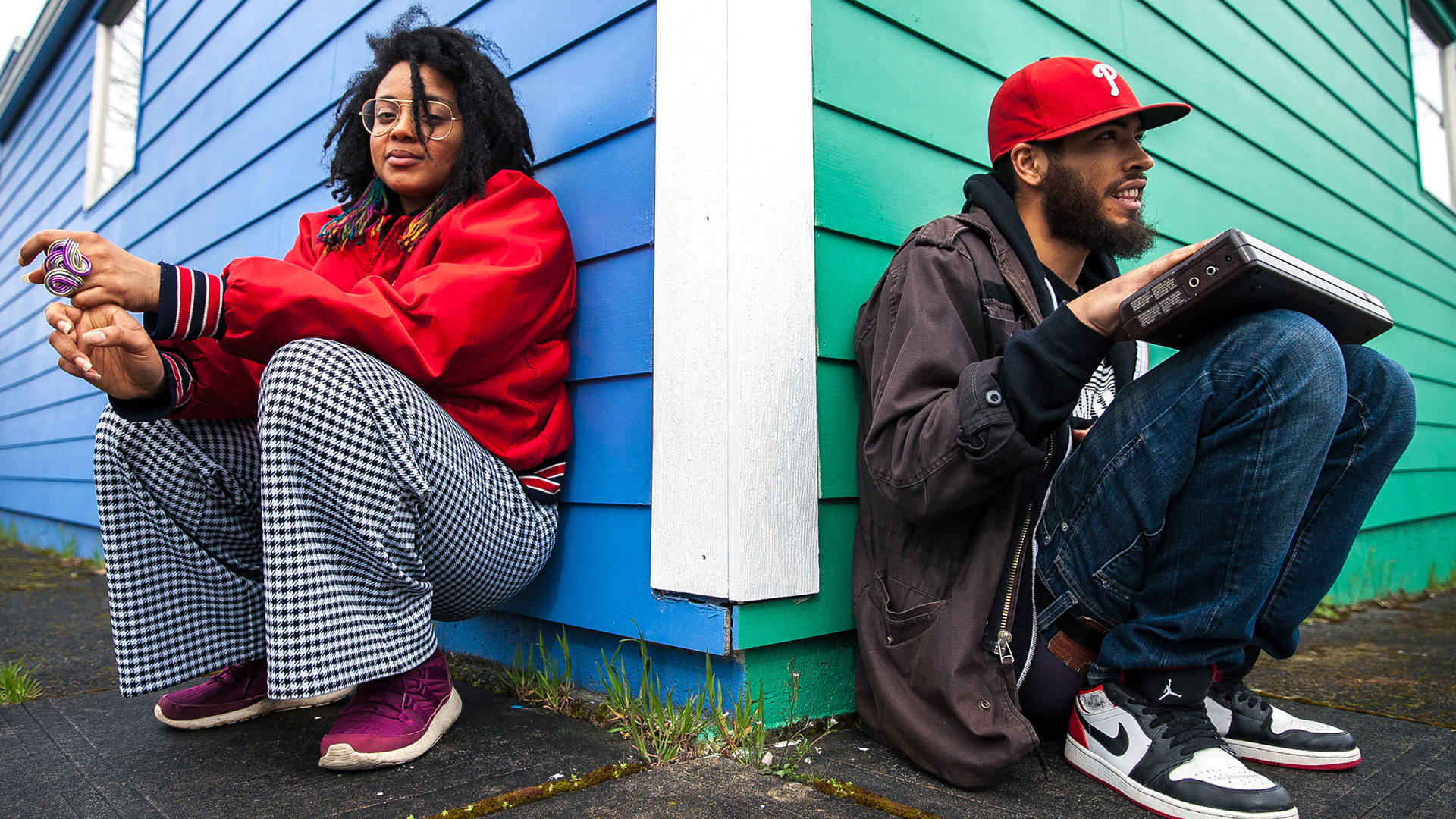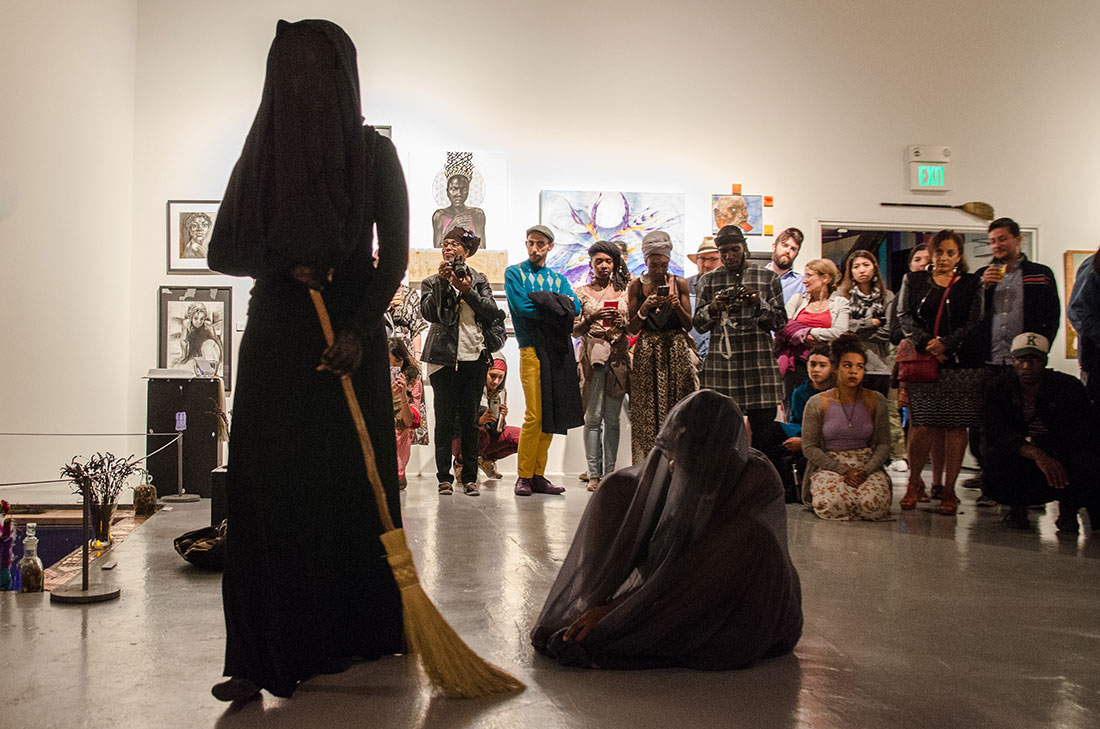For the past seven years, Night Light has reigned as SOMArts Cultural Center’s annual audiovisual experience, where installations, live performance, and sound blanket the center as over 800 people witness the postindustrial space transform into a physical and digital manifestation of the application of light in art.
This year, for the first time, the immersive festival extends to two days running Aug. 25–26. In an interesting twist, it responds to themes central to SOMArts’ current exhibit, The Black Woman Is God: Divine Revolution.
Co-curated by Karen Seneferu and Melorra Green, The Black Woman is God returns for its second year at SOMArts to celebrate the black female presence as the highest spiritual form, and to challenge racist and patriarchal perceptions devaluing the black woman’s contributions to society. Founded in 2013, The Black Woman Is God was originally conceived as a corrective to the dearth of African-American representation — especially of female African-American representation — in the art world, according to founder and co-curator Seneferu.
“I recognized that there was a void and that there were certain artists [within the African diaspora] being selected to speak on behalf of black artists. Or [to act] as a vehicle for the white establishment,” explains Seneferu.

Seneferu and Green’s first collaboration in the inaugural exhibit of The Black Woman Is God, at the African American Art and Culture Complex in 2013, drew an overwhelmingly positive response from the local community. Four years later, Divine Revolution acts as “a mirror reflection of ideal representations of beauty, of divinity, of power, of resilience. A reclaiming of historical narrative that, within the African cosmology, the black woman has always been seen as a deity,” says Seneferu. “It’s outside of that cosmology where the black woman’s body becomes a vehicle or a tool of oppression — and we wanted to reclaim that.”




